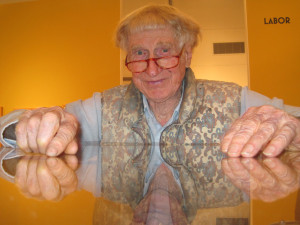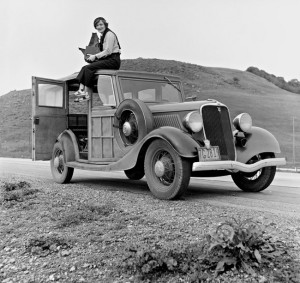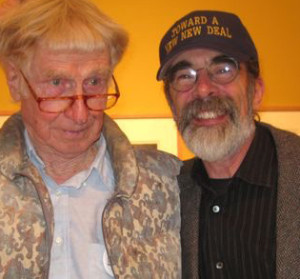
Mary McLeod Bethune, NYA director of Negro Activities; First Lady Eleanor Roosevelt and NYA Director Aubrey Willis Williams.
Source: thegrio.com
Sources disagree over how much First Lady Eleanor Roosevelt had to prod her husband to establish the National Youth Administration (NYA). However, there is no question that Mrs. Roosevelt was deeply troubled over the plight of the nation’s youth—that they might become another stranded or lost generation. This fear, moreover, was the impetus for her vigorous role in the initiation, planning and daily operation of the NYA—and her high-profile role in promoting public awareness of its achievements. Significantly, FDR referred to the NYA as “the missus’s organization!”
Established in 1935, the NYA was a leader in gender as well as racial equity: the number of girls served sometimes equaled or exceeded the number of boys! The dynamic educator Mary McLeod Bethune who headed the New Deal’s informal “black cabinet” that advised the administration on racial policies, was named the NYA’s Director of Negro Affairs, responsible for the implementation of the racially progressive policies that both Mrs. Roosevelt and the NYA’s Director Aubrey Williams espoused.
Williams, born and raised in Alabama, deplored the fact that Blacks were not being treated fairly by government projects and was determined to make the NYA an exception. His progressivism (“one of the pinkest of the pink,” according to Representative Hamilton Fish), made Williams—and the NYA—a target among some in Congress that had refused to enact an anti-lynching law.

Girls in NYA war training program, San Augustine, Texas, 1943.
Photo: John Vachon, Farm Security Administration-Office of War Information photograph collection. Courtesy, LOC
No age group escaped hardship during the Great Depression, but the cohort served by the NYA, young men and women ages 16 to 25, was especially hard hit. In 1935 when the NYA was inaugurated, an estimated five million of that age group were out of school and unemployed. At the beginning of the New Deal, the Children’s Bureau estimated that 23,000 adolescent hobos traveled the country riding the rails and hitchhiking along highways in search of work. Unemployment among black youth was much higher than that of white youth and Blacks found it extremely difficult to get a job, even in agriculture or domestic and personal service.
The NYA provided work relief to out-of-school, unemployed youth and work-study aid to make it possible for students to remain in high school or attend college. Youth who lacked proper medical care for economic reasons received it through the NYA. Such student aid programs were widespread and popular.
The first NYA work relief projects paid little attention to training possibilities. They provided work experience, but of a general, unskilled nature. NYA youth helped build parks and playgrounds; worked as aides to public authorities; looked after crippled children; assisted state and local traffic departments; and repaired books in local libraries—work that was useful to communities but less so to enrollees.
To aid rural youth who weren’t able to come to work in the morning and return home each night, some live-in projects were developed. In one such residence, girls from neighboring counties worked on a machine sewing project in the afternoon and, having not completed high school, attended classes each morning. By mid-1938, one hundred such centers were in operation, often at abandoned CCC camps or campuses of agricultural colleges. The NYA partnered with the Farm Security Administration (FSA) to help youths who wished to take up farming. The NYA would train them in efficient farming methods and the FSA would lend them money to go into business.

Girls at NYA welding class at Bethune-Cookman College, Daytona Beach, Florida, 1943.
Young women made up about 43 percent of the National Youth Administration’s total enrollment. Photo: Gordon Parks
From mid-1940 defense began to dominate the NYA. By early 1942, the out-of-school program had been abandoned, construction projects ended and the work study programs terminated. The emphasis became “industrial training,” mainly in machine-shop work, sheet-metal trades, welding, and electrical industries. Employment in the defense industry supplied the vital ingredient of job training often missing in a depressed economy.
One of a handful of New Deal programs that had progressive racial policies, the NYA employed 2.6 million young men and women in its out-of-school work program and more than 2 million in its student work program during its nine-year run. Growing opposition to the New Deal, Republican victories in the 1942 mid-term election, education officials’ fear that vocational training encroached on their domain and Aubrey Williams’s progressivism contributed to the demise of the NYA.
Congress killed the NYA in January 1944 despite its popularity, advancement of racial and gender diversity and exemplary contribution to war production.





